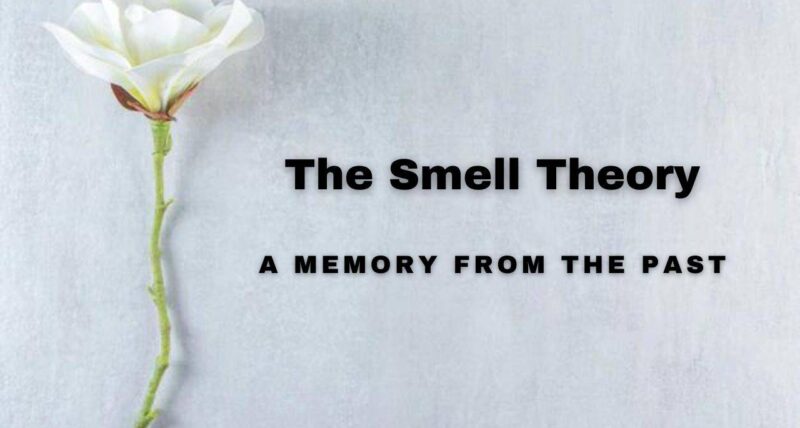Studies showcase the brains of humans and animals to connect with a particular memory, good or bad, in terms of smell. Also known as the smell theory, odors can control physiological and psychological behaviors in the living world.
Imagine walking along the street and smelling flowers you used to love as a child. This brings back many memories from the past, triggering an emotional affair in your brain. Back home, you will open that old wooden box of yours and go through the pictures of your younger self, reminiscing the happy memories.

All this is because of the scent of that flower you could relate to. Moving on, you will be able to understand the theory behind the same and always get fascinated. Also, the write-up aims to solve questions like “What are the two theories of odor?” and shed more light on the concept of the Proust effect.
The smell theory and the human brain
The anatomy of the human brain creates a link between a smell and an emotion/memory from the past. The olfactory bulb in the brain does monitor the smell one comes across. Now, the same structure does relay information to the other parts of the body, commanding them to behave in a certain way.
Odors take direct control over the human brain’s limbic system, comprising the hippocampus and the amygdala. The regions that are in charge of looking after memory and emotion. For decades, researchers have tried to decode the theory of smell and understand the evocative power it has over the behavioral attributes of a living being.
The smell theory types
Moving on with the theory of smell, we have two influential ideas backing up the same: the vibrational theory and the shape theory. Researchers are still in their preliminary stage with the information, and there is a long way to go. Nonetheless, let’s have a look into the details about the same:
The vibrational theory
Bonds make atoms stick together, and such arrangements can vibrate at a certain frequency. These vibrations transitioning into electrical signals and getting delivered into the human brain trigger a memory. Human beings can differentiate between multiple scents because of the vibrational energies activating different pathways. That brings you to a conclusion, molecules with similar frequency and bonds have similar scents.
The shape theory
As another deciding factor of the smell theory, the theory of shape has a long way to go. Here, the smell of a particular odorant is embedded within the molecular shape of the same. Thus working as a determining factor where the receptor can fit in. Also known as a lock & key theory, the shapes of the locks and keys are essential in the receptor activation process.
The Proust effect
Another important aspect of the theory of smell is the Proust effect. Although taste and sound do have a certain level of contribution to memory, it is the smell of an object that brings in a lot of images from the past.

Marcel Proust did come up with the Proust Effect definition earlier in the 20th century. He terms the same as an “involuntary memory” or a sudden action that triggers images from the past. It is the way a sensory memory brings back all sorts of recollections from the earlier days of one’s life, and the same can be both good (joyful, enjoyable, promising) and bad (anxiety, trauma, dissatisfaction).
Proust effect Psychology – The smell theory
Researchers Aggleton & Waskett, to explain the Proust effect on the Psychology of the human mind, did come up with an experiment of their own. The primary focus was a Viking Museum, where unusual scents were in use to modify the impact of the museum displays. Now the main thinking of Aggleton & Waskett is “whether the Viking odors if presented to individuals with a visit history of 2 years ago, have any effect on their memory?” On the other hand, they have individuals with exposure to non-Viking odors and no odors at all.
Methodology
The respondents did fill up questionnaires, answering about the various content in the museum display. Because the audience’s visiting time span was quite diverse, the researchers did utilize two phases for memory testing across three subject groups.
Two of the three groups got access to odors at each phase, and the third group was made to learn about the objects in the absence of smell queues. Now, coming to the type of odors used, they were Viking and non-Viking. And the first two groups get to smell the odors in differential sequences.
Results
Now, as per the results, the mean memory of the first group receiving Viking odor is the highest. Following them are the ones with a non-Viking odor and the last with no odor. But the differences incurred could not be sequenced in terms of statistical data because of the variation in performance. In the second phase of memory testing, the first group receiving Viking smell is the only one with clear enhancement in their memory performance.
The results suggest that odor queues are a strong factor in memory triggers. And as per detailed studies by other researchers, the theory of memory is quite persistent. Human beings tend to forget very little olfactory memory in comparison with visual recognition.
Proust effect and affective reactions – essential facts on smell
Researchers Hinton & Henry did find that subjects did illustrate more affective response to stimuli when exposed to odors in comparison with linguistic, food habits, and visual modalities. Also, study groups did notify about the importance of odor in the process of memory retrieval and an established link between emotional arousal and associative information. It is the amygdala mediating the needed actions as part of memory, olfaction, and emotion.

Further, here are some fascinating facts about smell
- The sense of smell can get boring. Like you will be able to smell the fresh aroma of cakes and biscuits upon entering a cafe, but it will fade away with time.
- Your cell’s ability to smell scents will get renewed every 28 days.
- Smell triggers 75% of human emotions.
- The first sense to develop in a baby is its sense of smell.
- Humans have scent blind spots. That way, each one of us has our unique way of smelling objects nearby.
- Humans can smell feelings. A study did confirm the same back in 2012.
- Pregnant women have a hypersensitive sense of smell in comparison to others.
- Teens aged 18 or 19 have the highest sense of smell.
- The ability to sense a smell is the weakest at the start of the day.
- When you are exposed to unpleasant smells for a prolonged duration, the after-effect can impair your sense of smell.
So that was all about the theory of smell and the relevant factors involved. From now on, whenever a certain scent takes you back down memory lane, you know the exact reason. And also will be able to control other related situations.



